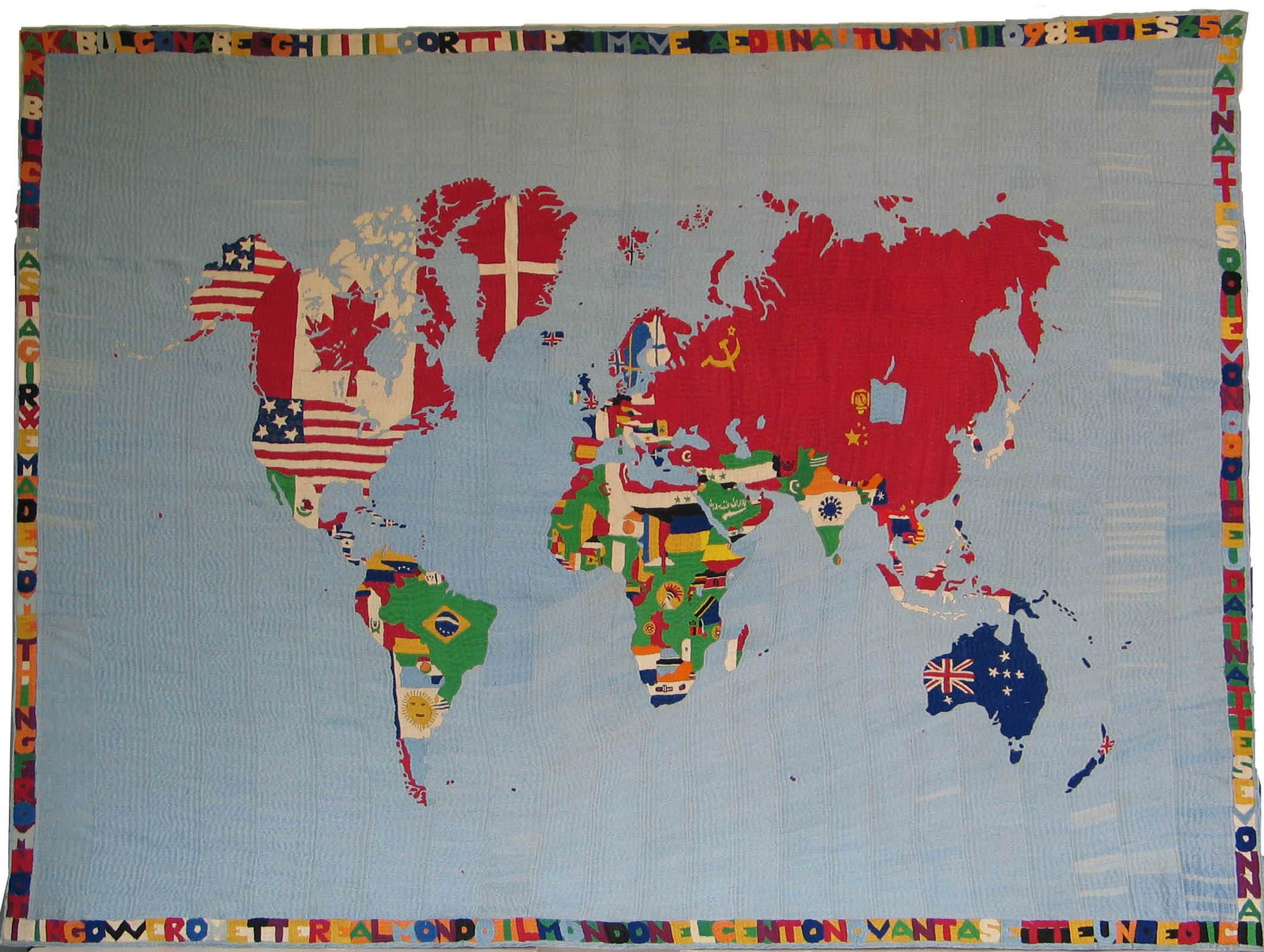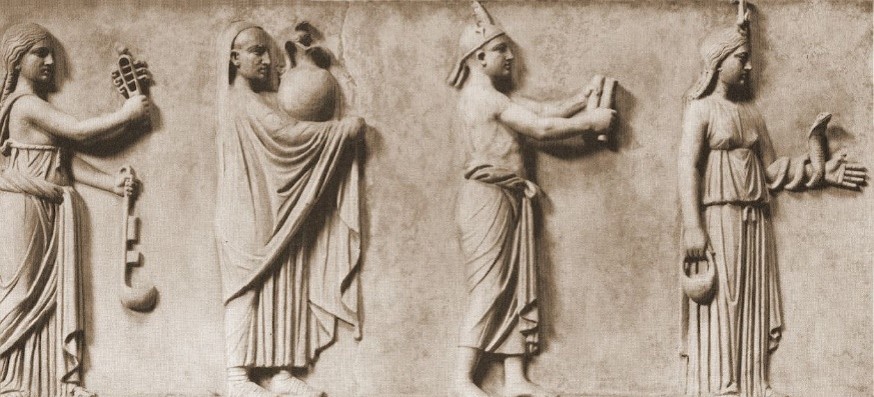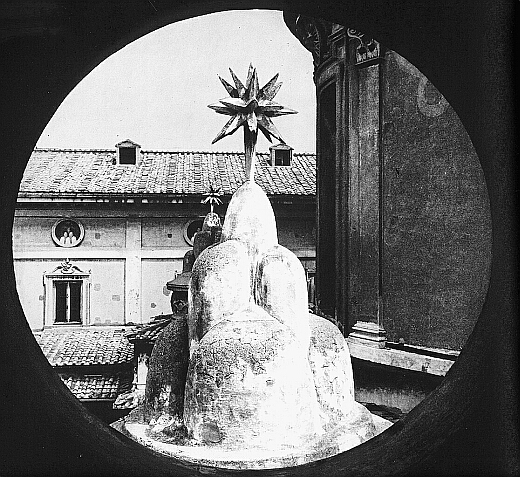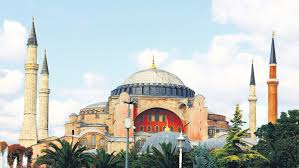
Early Modern Art - A
Academic Year 2023/2024 - 2nd semester
Prof. Francesca Mari
This email address is being protected from spambots. You need JavaScript enabled to view it.

Academic Year 2023/2024 - 2nd semester
Prof. Francesca Mari
This email address is being protected from spambots. You need JavaScript enabled to view it.

1st semester
Email: This email address is being protected from spambots. You need JavaScript enabled to view it.
Academic Year 2022/2023

Prof. Andrea Lauria
This email address is being protected from spambots. You need JavaScript enabled to view it.
The "Art Patronage over the centuries" course traces the history of the Museum and Collecting through the centuries. Starting from Petrarch's studiolo will be studied the Renaissance studiolo's evolution up to the private gallery and the creation of the public museum. By analyzing the genesis of the museum building, European and US museums will be compared to understand their differences. In the last part of the course, we will study the twentieth-century phenomenon of 'hypermuseums' and 'archistars' that have revolutionized contemporary Museology and Museography. The course will end by analyzing the current museums' international set-up with a particular focus on the Middle East 'hypermuseum' proliferation trying to find the analogy with the Western museums.

FIRST LESSON: 2nd April 2025: Calendario Lezioni/Esami | Macroarea di Lettere e Filosofia
PROGRAMME a.a. 2024/2025
Dutch & Flemish Rome: artists and collections

Academic Year 2023/2024
( This email address is being protected from spambots. You need JavaScript enabled to view it. )
Visual Power in Ancient Rome
The course "Visual Power in Ancient Rome2 aims to provide students with knowledge of the artistic representation of Roman imperial power through particular media: inscriptions, coins, monuments,
ornaments, insignia (symbols). This will provide a basic knowledge of the historical framework of the artistic representation and perception of Roman imperial power. This is a multifaceted area of research, which greatly assists our understanding of Roman society.
This course focuses on:
1) the representation and perception of Roman Imperial Power in the city of Rome and in the various provinces.
2) the representation of power by the individual emperors.
3) the link between artistic representation and the imperial policy.
This topic will allow us to understand how artistic representation became a powerful tool for cultural dissemination and political propaganda among the Romans. Emperors, in order to establish their power over an ever-expanding empire and to influence public opinion, used a variety of means, including iconography. Objects from the Roman imperial period were often political statements reflecting the government, the army, society, the economy and everyday life.
These forms of propaganda also helped to unify the empire, promote the Pax Romana (Roman peace) and inform Roman citizens about current events. When Rome passed to soldier emperors, propaganda became ineffective due to the instability of society. Visits to museums or places of historical and artistic interest in Rome are planned to better understand the role of art in imperial Rome.
Bibliography
- P. Zanker, The Power of Images in the Age of Augustus, The University of Michigan Press, 1990;
- T. Hölscher, The Visual Power in Ancient Greece and Rome. Between Art and Social Reality, University of California Press, 2018.

History of Architecture - Integrative course (20 hours) of Early modern Art B
(email: This email address is being protected from spambots. You need JavaScript enabled to view it.)
A.Y. 2021-2022
Lectures on
Syllabus
The course will examine the historical period of architecture from the second half of the 16th century in Rome to the Council of Trent and the ecclesiastical reform that led to changes in the architectural systems of the churches of religious orders, and the early Baroque period. The architecture that transformed the city from the pontificate of Sixtus V to that of Paul V and their architects. The course will deal with the Baroque revolution in architecture with a focus on new themes: meanings and themes of the Baroque, general characteristics, history and fortune of the term, the urban space of Roman Baroque architecture, infinity, and illusionism, which will be illustrated through a few visits to architectural emergencies in the city of Rome. The visits will focus on some architecture of the early Baroque period and on some architectural works by Francesco Borromini, Pietro da Cortona and Gian Lorenzo Bernini.
Lecture n.1: 7th March (ore 10.00-14.00).
1) Introduction to the course. Main objectives and explanation of the exercise required
Early Baroque Period:
1) Villa Mondragone
2) From Sixtus V to Paul V (1585-1621). The council of Trent and the Arts – The Church and the Reformers. The architecture at the time of Sixtus V. The architecture at the time of Paolo V and Cardinal Scipione Borghese.
Lecture n.2: 25th March (ore 9.00-12.00). Visit. Appointment via degli Astalli 16.
Early Baroque Period.
1) La chiesa del Gesù, Sant’Ignazio, Sant’Andrea della Valle, San Carlo ai Catinari
Lecture n.3: 8th April (10.00-14.00)
Baroque Architecture
1) Meanings and themes of the Baroque. General features, history and fortune of the term, themes of the Baroque architecture. Urban space of Roman Baroque architecture, infinity, illusionism.
Baroque Architecture
2) Francesco Borromini. San Carlo alle Quattro Fontane, Sant’ Ivo alla Sapienza, San Giovanni in Laterano, Santa Agnese a piazza Navona, Sant’Andrea delle Fratte (Tower and Dome), Collegio di Propaganda Fide, Oratorio di San Filippo Neri.
Lecture n. 4: 29th April (10.00-14.00) Visit. Appointment piazza del Popolo
Baroque Architecture. Walking on an urban route of Roman Baroque
1) Pietro da Cortona: Chiesa di santa Maria della Pace, Santa Maria in Via Lata, San Carlo al Corso.
2) Francesco Borromini: Sant’ Ivo alla Sapienza, Santa Agnese a piazza Navona
3) Gian Lorenzo Bernini. Santa Maria del Popolo, Palazzo di Montecitorio.
Lecture n.5: 4th May (10.00-13.00) Visit. Appointment at Villa Mondragone
1) Villa Mondragone
Lecture n. 6: 18th May (10.00-12.00) Visit. Appointment via del Quirinale 23
Baroque Architecture
1) San Carlino alle Quattro Fontane
2) Sant’Andrea delle Fratte
A visit to the Quirinale Palace is planned for April /May.
Bibliography:
- R. Wittkower, Art and Architecture in Italy 1600 to 1750, Harmondsworth, Penguin Books, 1° ed. 1958 (ed. ital. Torino, Einaudi, 1958, many times reprinted).
- J. Connors, Alliance and enmity in Roman Baroque urbanism, in Römisches Jahrbuch der Bibliotheca Hertziana, XXV, 1989, pp. 207-294 (1° ed. ital. Roma-Bari, Laterza, 2005)
- J. Connors, Borromini and the Roman oratory: style and society, Cambridge (Mass.), MIT Press 1980 (1° ed. ital. Torino, Einaudi, 1989).
- C. Norberg-Schulz, Baroque Architecture, New York, Abrams, 1971.
- C. Norberg-Schulz, Late Baroque and Rococo Architecture, New York, Abrams, 1973.
- Handouts by the teacher and, on Villa Mondragone: M. Richiello, From construction phases (Altemps - Borghese) to restorations (XIX - XX century), in: Villa Mondragone "second Rome", Formica M. ed., Rome, Palombi 2015.
HOW TO GET TO VILLA MONDRAGONE
Villa Mondragone images
Villa Mondragone ITA
Villa Mondragone ENG
 |
Prof. Luca Coniglio - Early Modern History
( This email address is being protected from spambots. You need JavaScript enabled to view it. )
ACADEMIC YEAR 2022/2023
-----------------------------------------------------------------------------------
ACADEMIC YEAR 2021/2022
Programme
The module focuses on the connections between the main events of European History and the social, institutional and cultural history of Rome during the Early Modern and Modern Age.
The political and social use of urban space (holy places, "polycentrism" of court and curia) as well as the cultural construction of the "Mith of Rome" from the tradition of the "Grand Tour" will also be investigated through guided tours. Particular attention will be devoted to recent interpretations of the Modern Papal State, also through appropriate reading, in-class presentations and written exercises.
Exam: The oral exam will allow evaluating the real ability of the students to understand the main events of Early Modern European History and its connections with the peculiar reality of Rome as the capital city of Papal State. Candidates should also display a proper register and the ability to wield historical sources.
AIMS
LEARNING OUTCOMES: The module aims to display the main themes of political, social and economical History in the specific context of Rome during the Modern Age.
KNOWLEDGE AND UNDERSTANDING: To acquire a good knowledge of the main processes of the Modern Age, including the peculiar aspects of the Roman context.
APPLYING KNOWLEDGE AND UNDERSTANDING: To develop the ability to analyze the main phases of Modern Rome and to recognize the relations between the City, the Italian peninsula and Europe.
MAKING JUDGEMENTS: To critically analyze information and sources.
Bibliography
Students attending the courses:
1. Court and politics in papal Rome, 1492-1700, edited by Gianvittorio Signorotto and Maria Antonietta Visceglia, Cambridge : Cambridge University press, 2002 (a pdf version will be provided at the beginning of the course.
2. The Routledge Companion to Early Modern Europe, 1453-1763 / by Chris Cook and Philip Broadhead, London-New York : Routledge, 2006
3. Selections of essays from: A companion to Early Modern Rome, 1492-1692, edited by Pamela M. Jones, Barbara Wisch and Simon Ditchfield, Leiden : Brill, 2019
Students not attending the courses will have to contact the Professor in order to have a personalized programme.

Prof. Frank Dabell (This email address is being protected from spambots. You need JavaScript enabled to view it.)
a.y. 2021-2022 – 2nd semester
-- MS TEAMS class --
Prof. Frank Dabell - Early Modern Art - B
The course will be dedicated to the arts in papal Rome between the late XVIth and the early XVIIIth century.
------------------
Prof. Maria Richiello - Roman Baroque Architecture , Integrative course (20 hours) of Early modern Art B - see HERE.

ACADEMIC YEAR 2021/2022
( This email address is being protected from spambots. You need JavaScript enabled to view it. )
Constantinian Age and the Imperial ideology: from the First to the Second Rome
The aim of the course is to offer an overview on the world of Late Antiquity.
It comprises an introductory part on the third century and the persecutions of the Christians, followed by two main sections: the first focusing on the rise of Christianity, the early cult of the saints, and the Roman martyrs in particular; the second one concerning the Constantinian policy of tolerance towards the Christians, the Christianisation of Rome, the growing importance of the Second Rome (Constantinople), and the imperial ideology on which the Byzantine theocracy is based.
Other sections will deal with the 'survival' of paganism, the development of the hagiographical genre in the Fourth and Fifth century (monasticism, cross-dressing saints, holy fools and stylite saints), daily life in Late antiquity, the importance of Byzantium for the transmission of ancient texts, concluding with the Plague at the age of Justinian.
We shall devote particular attention to the sources, historical, literary and religious, by reading selected passages of ancient authors in translation.
All the passages that we shall read and comment on during the classes shall be uploaded on the website and are part of the exam programme.
In order to take the oral exam, first you need to submit a written essay of 2500/3000 words.
Bibliography
O. Nicholson, "Constantine's Vision of the Cross", Vigiliae Christianae 54, n. 3, (2000) pp. 309-323
B.D. Shaw, "The Passion of Perpetua", Past and Present, 139 (May 1993), pp. 3-45.
P. Brown, The World of Late Antiquity, London 1971 (reprinted 2013).
A Cameron and S. G. Hall, Eusebius. The Life of Constantine, Oxford 1999, Introduction. pp. 1-53.
S. Runciman, The Byzantine Theocracy, Cambridge 1977, Chapter 1.
P. Brown "The raise and the Function of the Holy man in late Antiquity", Journal of Roman Studies (61) 1971, pp. 80-101 (not compulsory).
K. Sessa, Daily Life in Late Antiquity, Cambridge 2018 (not compulsory).
------------------------------
Academic Year 2020/2021
Programme
The aim of the course is to offer an overview on the world of Late Antiquity.
It comprises an introductory part on the third century and the persecutions of the Christians, followed by two main sections: the first focussing on the raise of Christianity, the early cult of the saints, and the Roman martyrs in particular; the second one concerning the Constantinian policy of tolerance towards the Christians, the Christianisation of Rome, the growing importance of the Second Rome (Constantinople), and the imperial ideology on which the Byzantine theocracy is based.
Other sections will deal with the 'survival' of paganism, the development of the hagiographical genre in the Fourth and Fifth century (monasticism, cross dressing saints, holy fools and stylite saints), daily life in Late antiquity, the importance of Byzantium for the transmission of ancient texts, concluding with the Plague at the age of Justinian.
We shall devote particular attention to the sources, historical, literary and religious, by reading selected passages of ancient authors in translation.
Selected Bibliography
Via Columbia 1 - Roma
+39 (06) 7259 5024